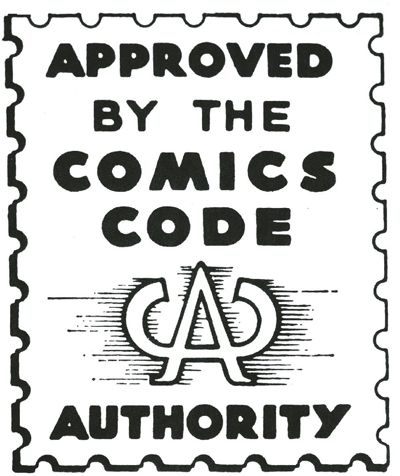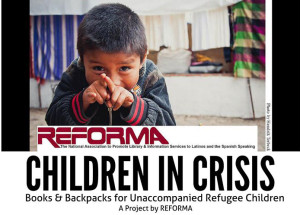
Banned Books Week, running September 21–27, offers libraries everywhere an opportunity to celebrate challenging (and challenged) literature and let their communities exercise their freedom to read. This year is devoted to comics and graphic novels, and the Comic Book Legal Defense Fund (CBLDF)—a nonprofit organization devoted to free speech and defending comic book readers, retailers, publishers, and creators—has partnered with the American Library Association (ALA) to create and distribute tools and resources for libraries to use for Banned Books Week and beyond. Libraries are encouraged to host read-outs, put up displays, and engage their communities with activities that raise awareness of censorship threats that continue to occur.
Comics and graphic novels are one of the fast growing collections in libraries today, and librarians and educators have recognized that they have multiple benefits for readers of all ages and abilities. This embrace of comics is new territory for the American public, at least in modern times. Comics stormed onto the scene in the 1930s and became even more popular in the 1940s, when US soldiers who were sent comics while on the front lines of World War Two came home with a love for the format. Yet, despite being published in a variety of genres for a largely adult audience, the popular belief was that comics were for for kids. Amid the Red Scare of the 1950s when America was seized with fear of Communist invasion, the presence of adult content in materials thought to be for kids was seen as terrifyingly subversive. This led to a showdown that would alter the comic book market forever.
In 1954, psychiatrist Fredric Wertham published the book Seduction of the Innocent in which he offered now-discredited evidence that linked comics to juvenile delinquency. Ultimately, Wertham became the star witness in hearings before the US Senate Judiciary's Subcommittee on Juvenile Delinquency. Disastrous testimony during the hearings and growing government and public pressure led comic publishers to create the Comics Code Authority (CCA).
The CCA ushered in decades of self-imposed censorship that all but demolished the industry. In order for a comic to be carried by a mainstream retailer, it was required to be CCA approved and bear the CCA seal on its cover. The seal was to reassure retailers about the acceptability of the content and that it adhered to the Code of the Comics Magazine Association of America. Comic creators had to cater to draconian restrictions such as:
- in every instance good shall triumph over evil and the criminal punished for his misdeeds;
- inclusion of stories dealing with evil shall be used or shall be published only where the intent is to illustrate a moral issue;
- no comic magazine shall use the words "horror" or "terror" in its title;
- profanity, obscenity, smut, vulgarity, or words or symbols which have acquired undesirable meanings are forbidden.
These severe restrictions created a vacuum in which only a few types of mainstream comics flourished: brightly colored and morally unambiguous superhero tales, chaste Archie-esque romances, and comics based on properties like Disney characters or illustrated literature classics.
Comic creators who wanted to write for adults were pushed underground, where they were embraced by the growing hippie subculture of the 1960s. This “comix” scene was the only place to find grown-up comic books until the 1980s. Over time, the CCA was revised and eventually died off, finally becoming officially defunct in 2011, when ownership of the seal was transferred to CBLDF.
When mainstream and independent comics broke free of self-censorship, they experienced a boom in popularity and an explosion in the different genres represented and audiences served. Comics also found a welcoming home in libraries and schools at all levels.
However, in spite of (or maybe because of) this new popularity, graphic novels face bans and challenges for the same reasons as many other books. Reasons include “adult content,” “language,” “sex/nudity,” or “inappropriate for age group.” Comics are uniquely vulnerable because of the medium’s visual nature and because comics still carry the stigma of low-value speech. Some challenges are brought because a single page or panel is taken out of context, while others come under attack because of the mistaken notion that all comics are for children.
CBLDF has tracked and reported on these challenges (you can see its list here), but some of the most striking recent cases include:
- Jeff Smith’s popular all-ages series Bone was one of the most challenged books of 2013;
- The middle school anthology Stuck in the Middle: Seventeen Comics from an Unpleasant Age was threatened with removal from all libraries throughout the Dixfield, Maine, school district because of language and drug references. Though retained in the collection, students need parental permission to check it out;
- An attempt was made to remove Marjane Satrapi’s Persepolis, a memoir about growing up during the Islamic Revolution, from Chicago Public Schools, drawing protest from students, teachers, Satrapi, ALA, and free speech advocates;
- The South Carolina legislature punished the College of Charleston for including 2014 MacArthur Genius Grant recipient Alison Bechdel’s memoir Fun Home: A Family Tragicomic in an optional summer reading program for incoming freshmen by attempting to cut the school’s budget by $52,000—the precise amount of the program. Ultimately the budget was not cut.
These challenges demonstrate how important it is to defend graphic novels. Libraries must be ready to stand up for the community’s freedom to read by having collection development and reconsideration policies that protect all collections and ensuring those policies are followed in every instance. Graphic novels must be protected from “one-panel challenges” and that staff must understand that every challenged book should undergo a full review. Most important, librarians should talk to graphic novel readers to learn what makes this art form so special.
Graphic novels rightly belong in Banned Books Week celebrations. They introduce a playful air and suggest some fun and interactive programming ideas. For example, why not include graphic novels into your read-out? You can have multiple people participate, letting each reader take a character and introduce a dramatic element while projecting on a screen the panels they are reading so that the audience can see the book while listening. Highlight banned graphic novels in library book displays or on bulletin boards. You could introduce challenged graphic novels to book clubs for any audience; titles like Persepolis, Blankets, and Maus can spur great conversations among teens and adults alike. It would be an ideal time to have a comic book artist visit your library to talk about his or her work or lead a workshop to get patrons creating their own comics! For more programming ideas, check out the CBLDF’s Banned Books Week Handbook.


